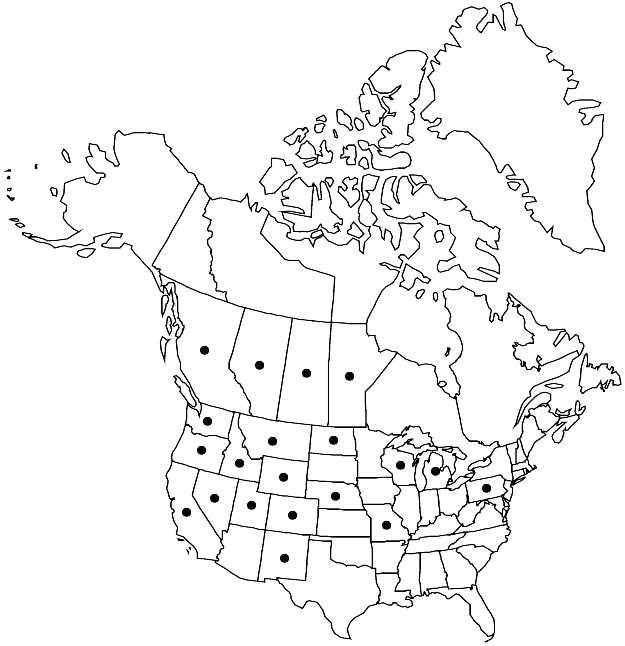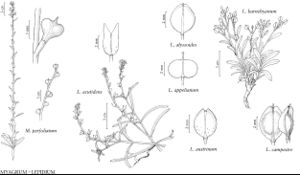Lepidium appelianum
Novon 12: 7. 2002.
Perennials; (rhizomatous); often densely hirsute. Stems simple or several from base, erect or ascending, branched distally, (1–) 1.5–3.5 (–5) dm. Basal leaves (often withered by anthesis); not rosulate; petiole 0.5–1.5 cm; blade obovate to oblanceolate, (1–) 2–6 (–7) cm × 3–20 mm, margins dentate to sinuate. Cauline leaves sessile; blade oblong or lanceolate, 1–5 (–8) cm × (3–) 5–15 (–30) mm, base sagittate, margins dentate or subentire, (surfaces pubescent). Racemes (usually corymbose, rarely paniculate), rarely elongated in fruit; rachis pubescent, trichomes often curved. Fruiting pedicels divaricate to ascending, straight or slightly curved, (terete), 3–9 (–12) × 0.2–0.3 mm, pubescent. Flowers: sepals oblong, 1.4–2 × 0.7–1 mm; petals white, broadly obovate, (2.2–) 2.8–4 × 1–3 mm, claw 1–1.4 mm; stamens 6; filaments 2–2.5 mm, (glabrous); anthers 0.4–0.5 mm. Fruits (indehiscent), globose or, rarely, subglobose, (2–) 3–4.4 (–5) mm diam., (inflated), apically not winged, apical notch absent; valves thin, smooth, not veined, densely puberulent; style 0.5–1.5 mm. Seeds (brown or dark-brown), ovoid, 1.5–2 × 1–1.5 mm. 2n = 16.
Phenology: Flowering May–Sep.
Habitat: Roadsides, sagebrush communities, alkaline meadows, waste grounds, ditch and stream sides, fields, pastures
Elevation: 400-2400 m
Distribution

Introduced; Alta., B.C., Man., Sask., Calif., Colo., Idaho, Mich., Mo., Mont., Nebr., Nev., N.Mex., N.Dak., Oreg., Pa., Utah, Wash., Wis., Wyo., c Asia, also in South America, other parts of Asia
Discussion
Lepidium appelianum has become a noxious weed in most of its range in North America.
Selected References
None.
Lower Taxa
"elongated" is not a number."thick" is not a number."dm" is not declared as a valid unit of measurement for this property."dm" is not declared as a valid unit of measurement for this property.
